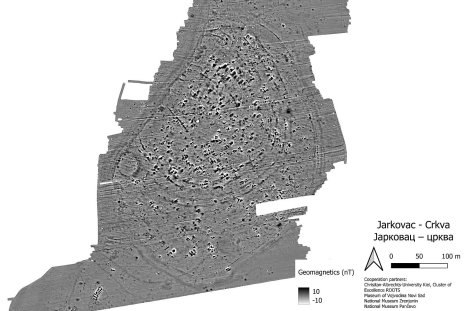Scientists have solved part of a longstanding mystery on how a gigantic hole in Antarctica's sea ice formed.
Scientists first discovered the mysterious hole, known as a polynya, in the 1970s. It was named the Maud Rise polynya, as it occurred on the Maud Rise mount in the Weddell Sea.
It has occurred sporadically since the 1970s, usually only for short periods. However, in the winter of 2017, the hole persisted for several weeks and became very large.
During this time, it grew from 9,500 square kilometers in mid-September to about 80,000 by late October, according to a previous NASA Earth Observatory report.
"The polynya has not opened up again since 2017. The last time we had such a long-lived and large polynya was in the 1970s. Open ocean polynyas are quite rare!" Aditya Narayanan, a Postdoctoral Research Fellow at the University of Southampton, who led the research, told Newsweek.
There have been many puzzle pieces to fit together around this hole. And now, a further piece of the mystery has been solved in a Science Advances study.
Interactions between the wind and the ocean currents have a part to play in forming this polynya, researchers from the University of Southampton, the University of Gothenburg, and the University of California San Diego reported in the study. These conditions, paired with the "complex geography of the ocean floor," caused heat and salt to rise.
The ocean in Antarctica freezes over every winter, but these strong coastal winds can bounce off the continent and push the ice in different directions, the study explains. This is how polynya form.
"The polynya is a site of intense exchange of heat and carbon between the ocean and the atmosphere," Narayanan said. "Such mixing has implications over timescales of decades for the regional ocean and atmospheric circulation and the heat stored at depth within the ocean. We found a new mechanism involved in the formation of the Maud Rise polynya which involved the interaction of the Weddell Gyre jet with the seamount."
During the winters of 2016 and 2017, when the Maud Rise polynya persisted for several weeks, ocean currents in the area became much stronger. This caused warm, salty water to rise, subsequently mixing with the surface water.
"This upwelling helps to explain how the sea ice might melt. But as sea ice melts this leads to a freshening of the surface water, which should in turn put a stop to the mixing. So, another process must be happening for the polynya to persist. There must be an additional input of salt from somewhere," Fabien Roquet, a professor in Physical Oceanography at the University of Gothenburg and co-author of the study, said in a statement.
To discover more about where the salt was coming from, the researchers observed data from autonomous floats and tracked marine mammals. They also used a computer model of the ocean and remotely sensed sea ice maps.
They found that as the current flowed around the Maud Rise plateau, salt was being transported on top of it. From here the salt moved to the northern area of the Maud Rise.
"The polynya emerged in the context of an overall reduction in sea ice in the Southern Ocean. Some of the mechanisms at play here were also responsible for the reduction in sea ice seen in the Weddell Sea and the larger Southern Ocean," Narayanan said.
"In a warming climate, the band of westerlies in the Southern Ocean shifts poleward, leading to increased atmospheric freshening of the ocean surface and enhanced stratification, which inhibits the formation of open ocean polynyas. Concurrently, a competing mechanism arises from the ocean depths.
"The poleward movement of the westerlies enhances the upwelling of warm and saline waters from deep within the ocean, weakening the stratification and favoring polynya formation. This process also warms the surface waters, further inhibiting sea ice formation."
Sarah Gille from the University of California San Diego, another co-author of the research, said polynyas can leave a lasting impact on the water even after they've formed. They can even change how the water moves and how the currents carry heat, meaning studying them is crucial for deepening scientists' understanding of the area.
Gille added: "For the first time since observations began in the 1970s, there's a negative trend in sea ice in the Southern Ocean, which began around 2016. Before then it had remained somewhat stable."
Do you have a tip on a science story that Newsweek should be covering? Do you have a question about this study? Let us know via science@newsweek.com.
Disclaimer: The copyright of this article belongs to the original author. Reposting this article is solely for the purpose of information dissemination and does not constitute any investment advice. If there is any infringement, please contact us immediately. We will make corrections or deletions as necessary. Thank you.



